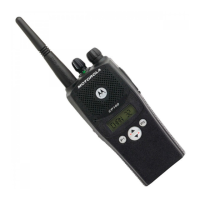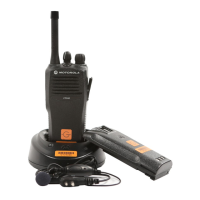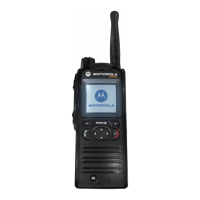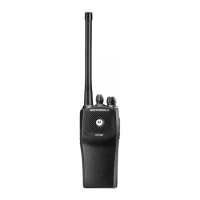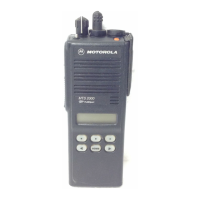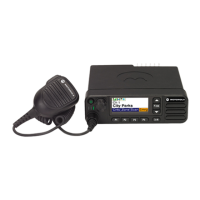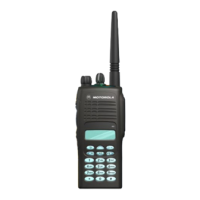4-2 Performance Checks: RF Test Mode
Supply voltage can be connected from the battery eliminator. The equipment required for alignment
procedures is connected as shown in the Radio Performance Checks Setup diagram (Figure 4-1).
Initial equipment control settings should be as indicated in Table 4-1 and should be the same for all
performance checks and tuner alignment procedures.
4.3 RF Test Mode
When the PR400 radio is operating in its normal environment, the radio's microcomputer controls the
RF channel selection, transmitter key-up, and receiver muting, according to the customer codeplug
configuration. However, when the unit is on the bench for testing, alignment, or repair, it must be
removed from its normal environment using a special routine, called RF TEST MODE. This mode
allows bench testing of the radio at various test frequencies across the entire band, at both high and
low transmit power (if applicable), at various channel spacings, and with different coded or carrier
squelch types. Any customer specific programming in the radio will not be changed or affected by use
of the RF Test Mode.
Figure 4-2. Side Button Locations
Table 4-1. Initial Equipment Control Settings
Service Monitor Test Set Power Supply
Monitor Mode: Power Monitor Spkr set: A Voltage: 7.5 Vdc
RF Attenuation: -70 Spkr/load:
Speaker
DC on/standby:
Standby
AM, CW, FM: FM PTT: OFF Volt Range: 10 V
Oscilloscope Source: Mod
Oscilloscope Horiz: 1 0 mSec/Div
Oscilloscope Vert: 2.5kHz/Div
Oscilloscope Trig: Auto
Monitor Image: Hi
Monitor BW: Nar
Monitor Squelch: mid CW
Monitor Vol: 1/4 CW
Current: 2.5 A
P1
P2
1
2
3
4
5
6
7
8
9
*
0
#
Side Button 1
Side Button 2
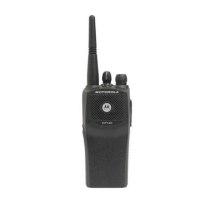
